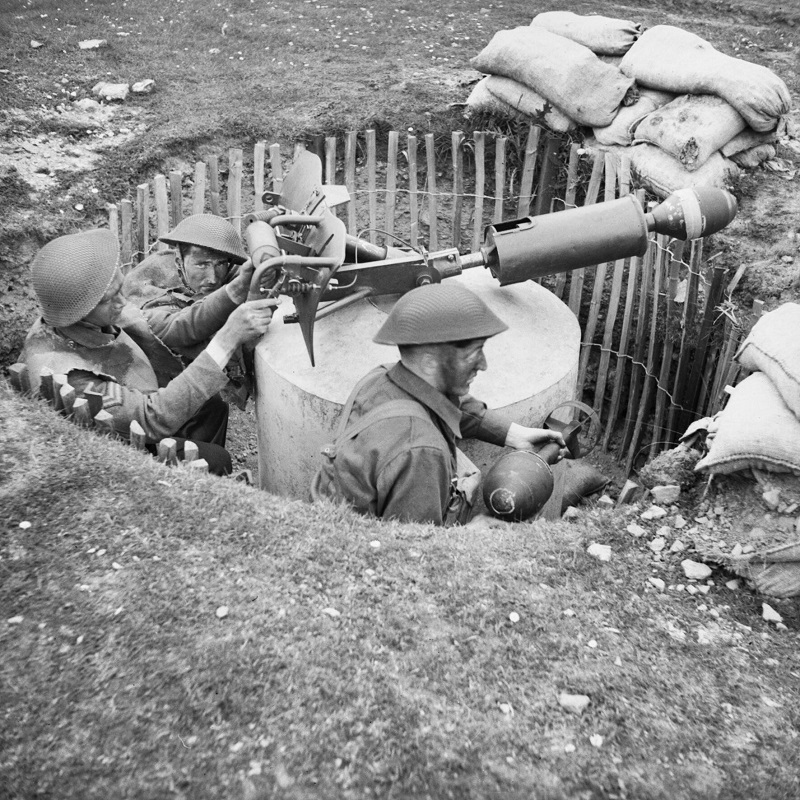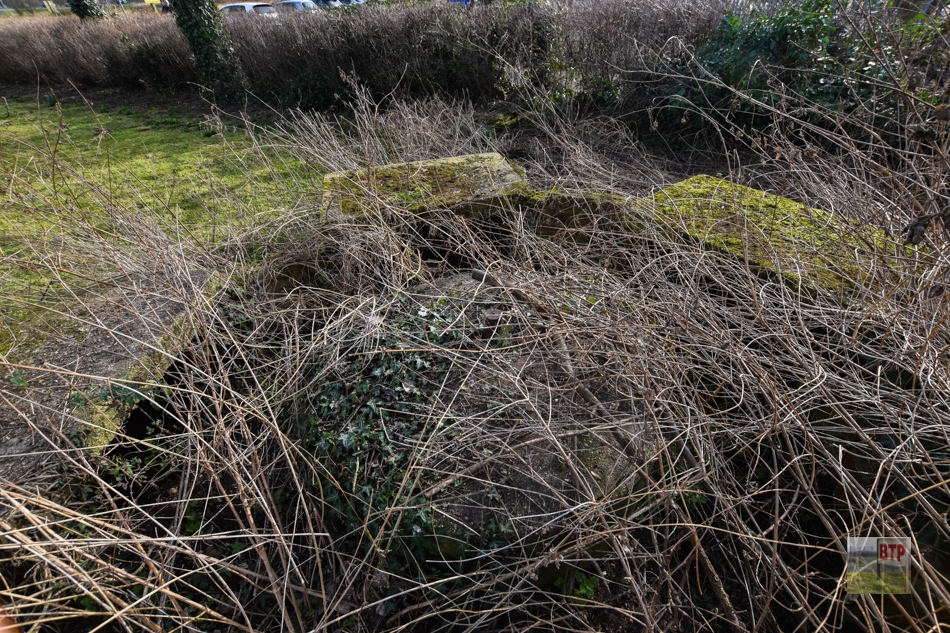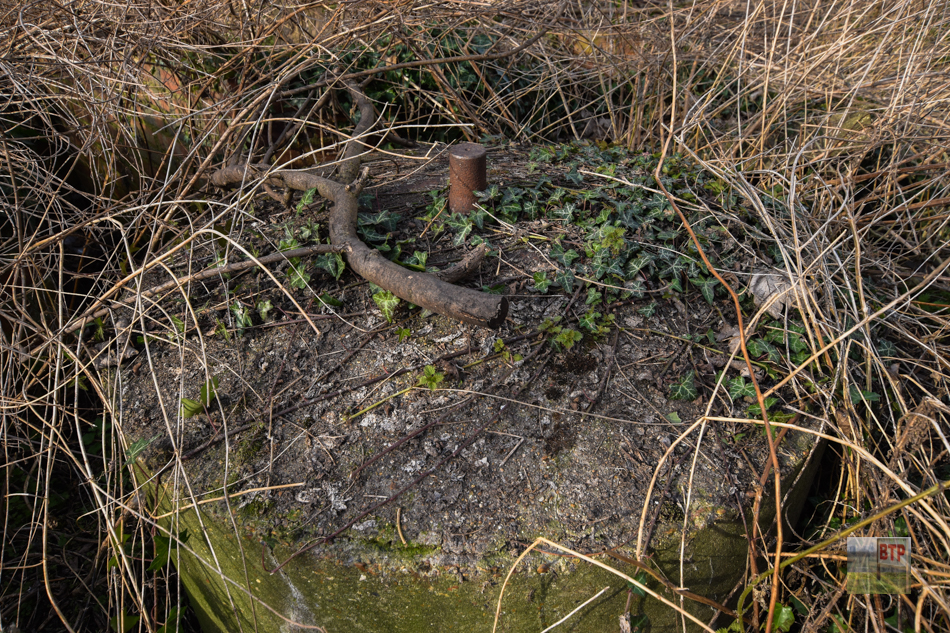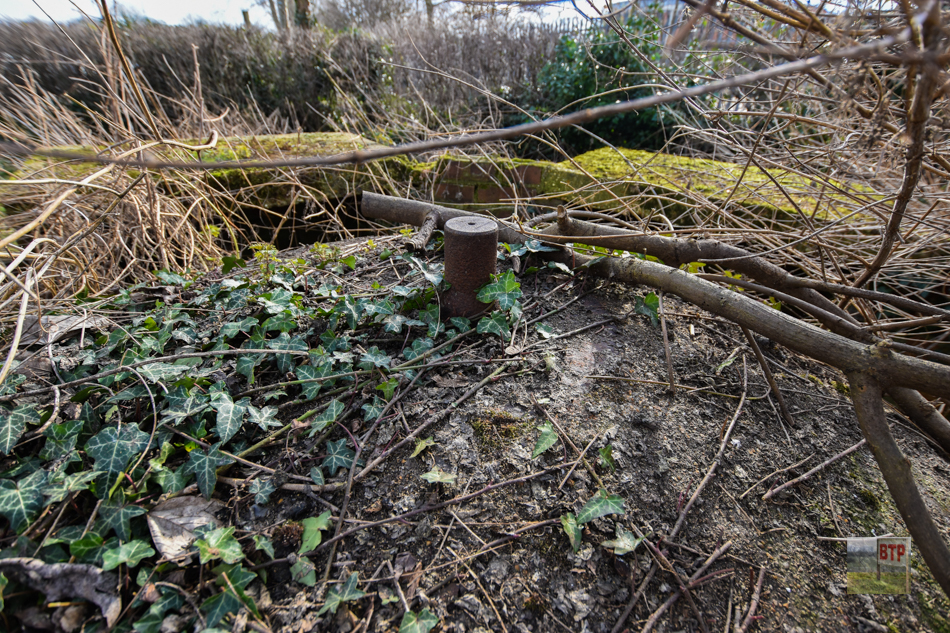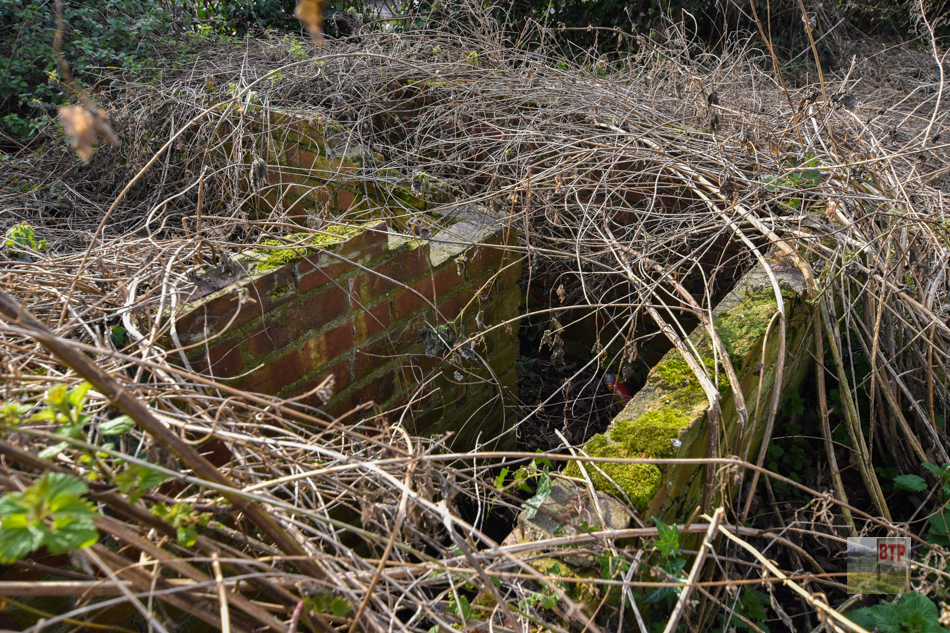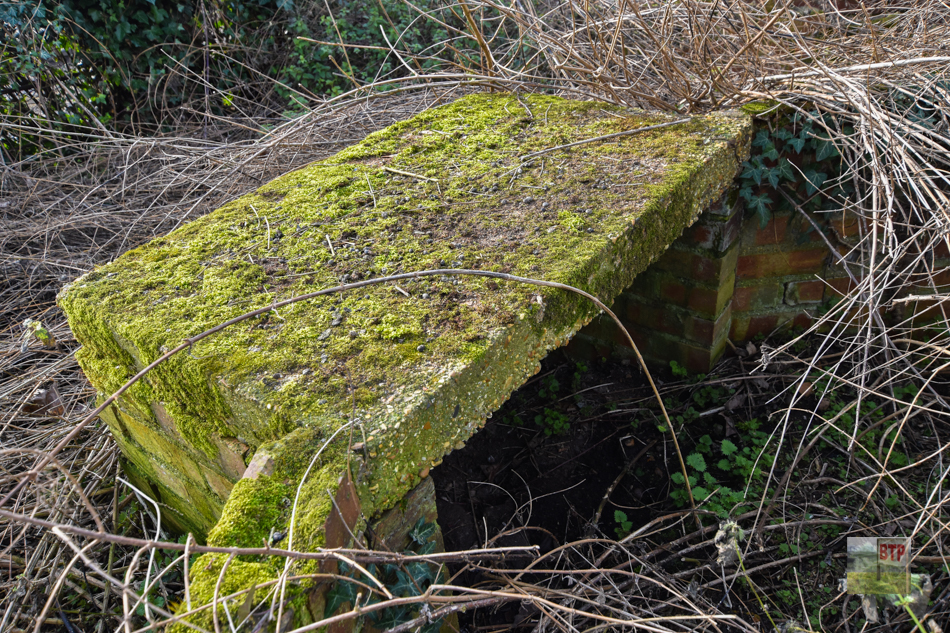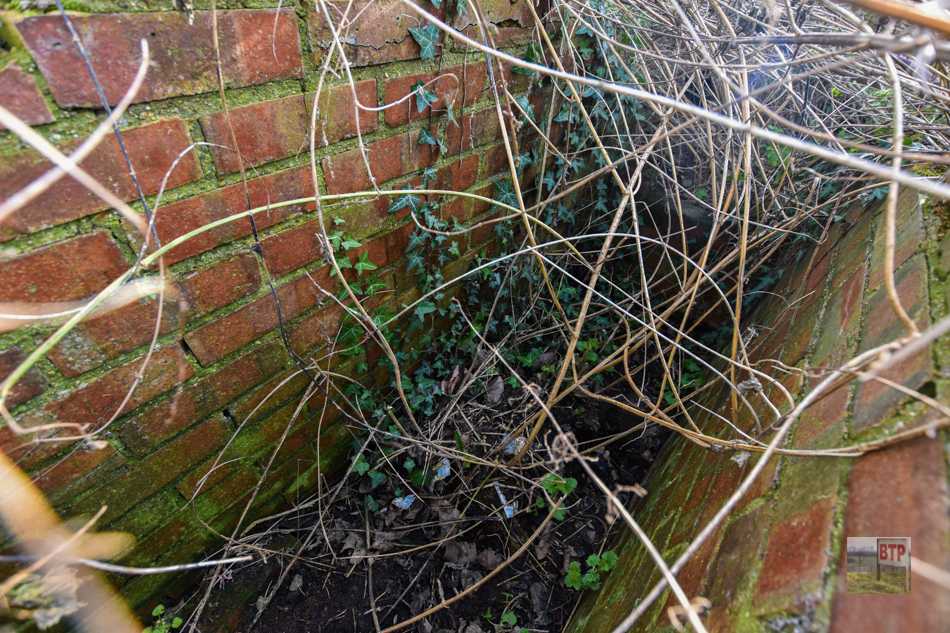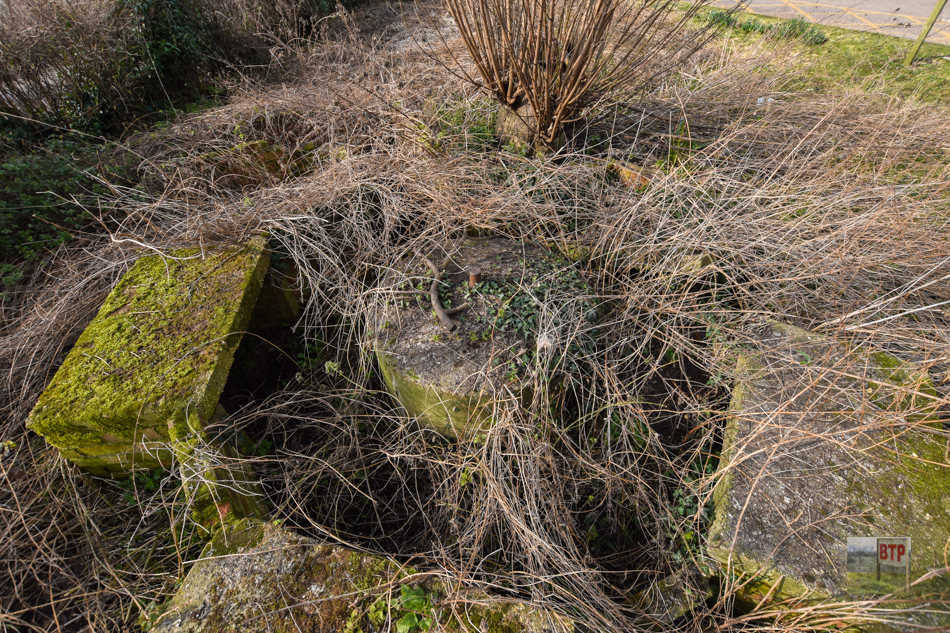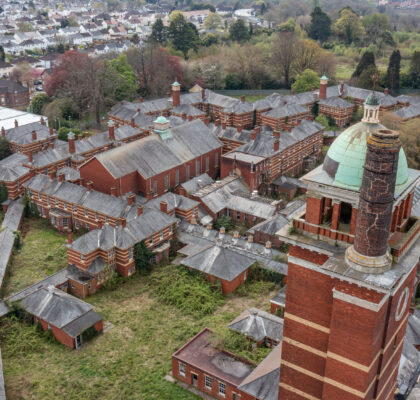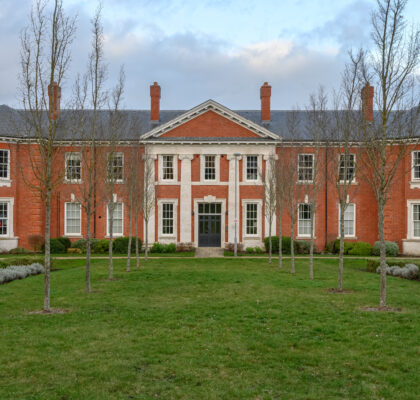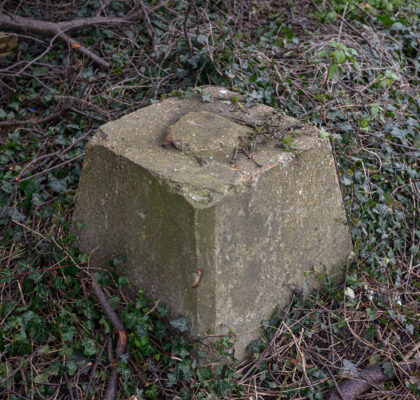The Spigot Mortar, or a Bombard as it’s also know. They were developed in the 1930’s although it wasn’t until the Second World War that Prime Minister Winston Churchill approved the anti-tank weapon for mass production with over 20,000 produced throughout the war, issued to forces across the land. As the black and white image below (Wikipedia) shows, the spigot mortar was placed on top of fixed concrete based, and when the bomb was to be fired off, it would be pushed down onto the spigot which detonated the charge in the propeller, sending it flying towards a tank and inflicting serious damage. Between 3 and 5 men would have operated the device although many refused to do so, saying that it was too dated and other weapons were preferred. It’s thought that only 350 of these concrete bases remain, many without the brick enclosure around them. This Chelmsford one does have the brick enclosure, and is easy to miss due to the trees.
This entry was posted in Location ReportChelmsford Spigot Mortar Emplacement – Spherical Image – RICOH THETA

